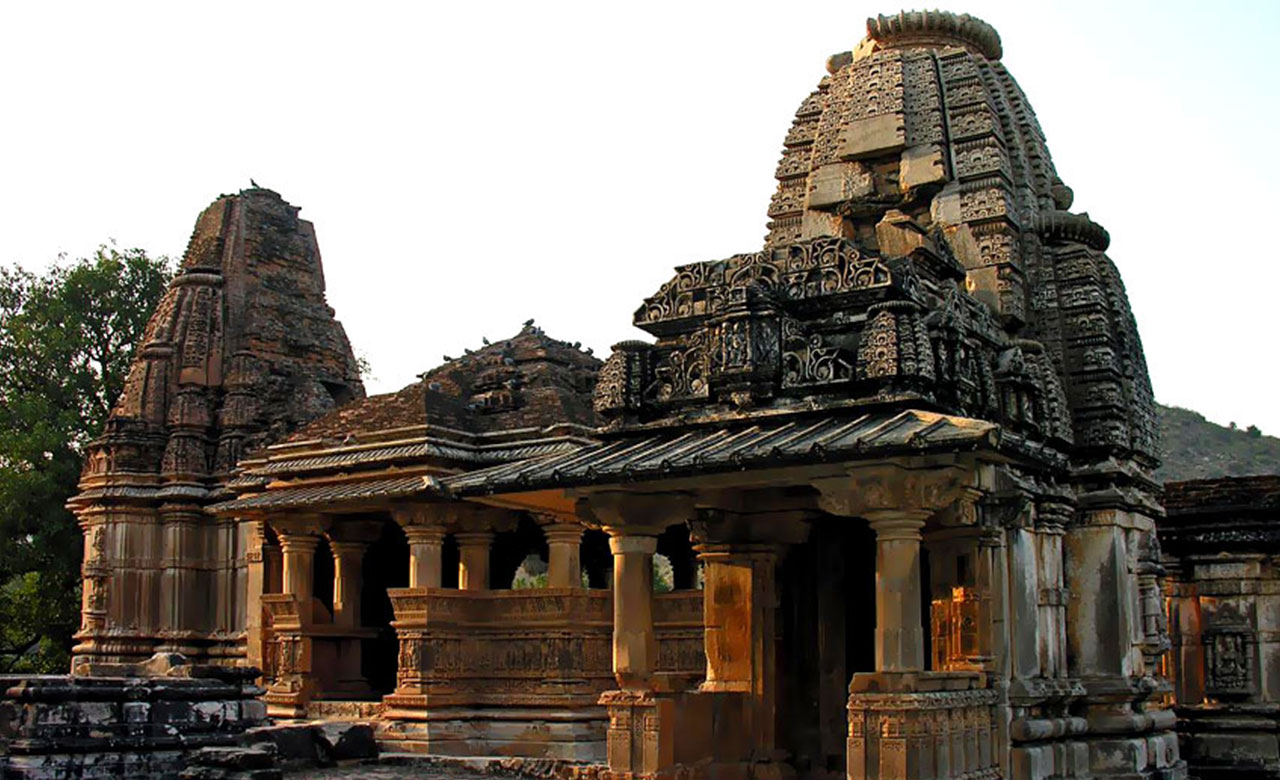
Informative
Eklingji Temple, Udaipur
Most powerful tantric temples of India Series | Part 9- Eklingji Temple, Udaipur
Scorching sun, colorful camels, sand dunes, castles and dancing nomads come to mind when one speaks of Rajasthan. However, what most of us don’t know is that the state also carries rich flora fauna, and lakes that spread over miles, bringing respite to the traveller’s eyes. The Tantra temple we are visiting today is from the latter part of Rajasthan. Eklingji Mahadev temple.
Located 20 KMs North of Udaipur, Eklingji is a Tantric pilgrimage site, hidden in the foothills of Mewar, accompanied by a big lake. During the 8th century, a fighter named Bappa Rawal established the legendary Mewar Kingdom. In 728 CE, he built a beautiful temple, made up of Granite and sandstone, with a Shiva idol. The temple is now known as Eklingji temple.
The great sage, and the Guru of Bappa, saint Harit Rashi performed a hard penance to this Shiva idol, and with his penance, Bappa received blessings. Later, Bappa Rawal attacked Chittor, defeating King Mansingh, acquiring the legendary Chittor fort. Till the Indian independence, for the last 1200 years, his descendants ruled these lands.
All these descendent kings consider Eklingji as their Ishta Dev and the true ruler of the Mewar region. These kings proudly declared themselves as the ministers or caretakers of Eklingji, handling their lord Shiva’s empire. Every order issued from the royal court used to be published by the name of lord Ekalingji. Whenever they visited the temple, they used to carry the royal emblems on their shoulders as a sign of respect to the true ruler of the land – Ekalingji Mahadev.
This white temple is almost fifty feet taller, with a circumference of 60 feet at the bottom. There lies a unique, three feet Shiva Lingam, made up of black marble, with four faces. According to the locals, the head facing east symbolizes Surya (Sun), west as Brahma, North Vishnu, and south – Rudra.
There are two main entrances for the main temple, located in the west and south direction. You can find a Bappa Rawal’s statue with both of his hands folded, saluting Lord Ekalingji. The roof courtyard of the temple is ornate with decorative pillars. A giant bronze statue of Nandi (vehicle of Lord Shiva), facing the deity, guards the temple entrance, along with two giant elephants welcoming the devotees.
Near the east wall, you can find smaller shrines dedicated to Divine Mother Kali and Divine Mother Parvati, along with Lord Kartikeya and Lord Ganesh.The western door opens to a large hallway, where you can see devotees praying to their Lord Shiva. Followers of Tantra visit Eklingji to seek healing powers possessed by Shiva, the Lord of Physicians. The holy water coming out from the temple is reputed to have remarkable digestive properties. You can see temples dedicated to Divine Mother Amba, Kalika, and Ganesh Ji, outside the temple. The small town of Eklingji is filled with tiny ancient temples. There are about 70 temples that can be found in the area surrounding the temple premises.
Mysterious Mukhalinga:
Even though locals believe that the four faces on the Lingam are Rudra, Brahma, Vishnu, and Surya, Tantric worshippers believe that those are five aspects of Shiva himself. Vamadeva (facing north), Sadyojata (facing west), Aghora (facing south), Tatpurusha(facing east), and Ishana(Sky) are these five aspects. The center shaft is known as Ishana, a formless absolute divine, the one without any direction.
These five aspects represent the five elements governing the entire universe. Some Tantra worshippers believe that these five attributes represent five ‘M’s of Tantra: Mantra, Mudra(gesture), Madya(liquor), Mansa(meat), and Maithuna(intercourse), helping them to reach the divine.
Few believe that these five elements represent Pancha Tanmatra. That is, five subtle senses of hearing, touch, sight, taste, and smell, when combined, surrendering and concentrating on the holy feet of the divine, taking a seeker towards Nirvana.
In Tantra, often, our body is termed as an instrument to reach towards the divine. These five attributes of the Ekalingji Shiva Lingam are also compared with Pancha-Prana. That is, Praana (life force); Apaana (excretive); Vyaana (annular); Udhaana (upsurge); Samana (ingestion) are the five vital energy forces required for the proper physiological functioning of the body, to be used as a carrier, helping us on the path of spirituality. (Include link to the life force blog)
Even though every Sadhak coming here has a different interpretation of the Idol, they have no doubt in mind that the Lord Ekalingji is keeping all sets of eyes on him, protecting him from the evil forces, nurturing and assisting them on every step, every turn on the path of life.
Located in the mountains of Rajasthan, once upon a time, this temple was a popular destination for Tantra worshippers. Kings and commoners used to pay homage here together, with a thunderous pitch of mantra chanting, evocating the Gods in the skies. In the middle of the fierce battle, the warcry ‘Jai Eklingji Ki’ used to ignite Lord Shiva’s spirit within a common soldier of a Rajput clan, fighting to keep the Mewar safe from the clutches of invaders. In the middle ages, known for its tantric powers, today, this temple attracts people from all over the country in the form of Shiva devotees.
We recommend you to visit this mighty Tantric temple at least once in a lifetime to experience its rich heritage, history, along with the influx of positive energy it will create within you.
This blog post is dedicated to all the ancient Tantra temples, once were considered as powerful sources of divine energies to achieve enlightenment, but now lost somewhere in the urbanization.
When was the last time you visited such an ancient temple? Were you able to connect with it spiritually? If you have, we would love to hear from you.
Please write to us at info@ChamundaSwamiJi.com and subscribe to our blog to get more information on Tantra, Mantra, and meditation.
Jai Ekalingji Ki.
Post a Comment
-
Subscribe to Our Blog
-
Categories
-
Popular Articles
- Dead moth in the house. What universe is trying to tell you?
- Spiritual Meaning of Moth
- Vivah Bandhan Curse – What Is It and How to Spiritually Heal It.
- What are Beej Mantras?
- The Dasa Mahavidyas
- Tripura Sundari | The Dasa Mahavidya
- Maa Bhuvaneshwari | The Dasa Mahavidyas
- Ramakrishna Paramhansa – The Man who almost became a Woman
- The Five Shades of Tantra
- Maa Chinnamasta | The Dasa Mahavidyas



